Xiaomi 17 Pro Max vs. iPhone 17 Pro Max: Table of Content
The premium smartphone war in 2025 is heating up, and two names come at the top of the conversation — the Xiaomi 17 Pro Max and the iPhone 17 Pro Max. Both of them represent the pinnacle of their respective ecosystems, boasting cutting-edge hardware, advanced AI integration, and bold design choices. Here’s an in-depth comparison to help you decide which one truly earns the “Pro Max” title in 2025.
Also Read: realme GT 8 Pro vs. OnePlus 15 vs. iQOO 15: Camera Comparison
Xiaomi 17 Pro Max vs. iPhone 17 Pro Max: Tech Specs
| Xiaomi 17 Pro Max | iPhone 17 Pro Max | |
| Dimensions | 162.9 x 77.6 x 8 mm | 163.4 x 78 x 8.8 mm |
| Weight | 219 grams | 233 grams |
| Colors | Black, White, Purple, Green | Silver, Cosmic Orange, Deep Blue |
| IP Rating | IP68 (6 meters for up to 30 minutes) | IP68 (6 meters for up to 30 minutes) |
| Display | 6.9-inch LTPO AMOLED; 120Hz | 6.9-inch Super Retina XDR OLED; ProMotion supported |
| Processor | Snapdragon 8 Elite Gen 5 | A19 Pro (3nm), six-core GPU |
| RAM | 12 GB | 12 GB |
| Software | HyperOS 3; based on Android 16 | iOS 26 |
| Camera | Rear: 50MP + 50MP + 50MP Front: 50MP | Rear: 48MP + 48MP + 48MP Front: 18MP Center Stage |
| Battery Capacity | 7,500 mAh Si/C battery | up to 5,088 mAh battery |
| Charging Speed | 100W wired, 50W wireless charging | 40W wired, 25W wireless charging |
| Starting Price | CNY 5,999 | US: $999 / India: Rs. 1,19,999 |
Xiaomi 17 Pro Max vs. iPhone 17 Pro Max: Design
Dimensions & Weight

- Xiaomi 17 Pro Max: 162.9 x 77.6 x 8 mm; Weight: 219 grams
- iPhone 17 Pro Max: 163.4 x 78.0 x 8.75 mm; Weight: 231 grams
Between the two phones, the Xiaomi 17 Pro Max is the thinner and lighter one, and by a noticeable extent, no less.
Materials
Regarding materials, the Xiaomi 17 Pro Max’s Chinese unit uses Dragon Crystal Glass 3 protection and an aluminum frame. The back panel, although not specified, should also be made of a glass-like material.
The iPhone 17 Pro Max, on the other hand, uses Ceramic Shield 2 on the front, a Ceramic Shield back, and an aluminum unibody design (which marks Apple’s return to an aluminum frame for the Pro iPhones).
Design
On the front, the Xiaomi 17 Pro Max features a punch-hole screen, while the iPhone 17 Pro Max features a pill-shaped Dynamic Island; both phones feature symmetrical bezels on all sides of the screen.

On the back, the Xiaomi 17 Pro Max stands out from other phones on the market at the moment. While it has a protruding camera visor like the iPhone, the entire plateau (except for the camera sensors) is a functional screen; it surrounds the circular camera sensors on the left. The third camera sensor on the Xiaomi is located below the camera visor (toward the left).
As mentioned earlier, Apple’s latest Pro Max model has a bold camera “plateau” on the back panel, which makes up more space for the iPhone’s motherboard and camera sensors (besides being the most polarized design element on the handset). The camera plateau, carved out of aluminum, houses three sensors arranged in the iconic triangular fashion (like the previous models).
Other than that, the phone features a dual-tone back panel, thanks to the use of aluminum and glass in its construction (the central portion is made of glass to enable wireless charging).
Colors
- Xiaomi 17 Pro Max: Black, White, Purple, Green
- iPhone 17 Pro Max: Silver, Deep Blue, Cosmic Orange
Water Resistance
Both phones feature an IP68 dust and water resistance rating, which makes them suitable for submersion in up to 6 meters of freshwater for up to 30 minutes.
Also Read: iPhone 17 Pro vs. vivo X300 Pro vs. OPPO Find X9 Pro: Leaks Reveal the Ultimate Camera Showdown
Xiaomi 17 Pro Max vs. iPhone 17 Pro Max: Display

The Xiaomi 17 Pro Max features a 12-bit 6.9-inch LTPO AMOLED screen that has a resolution of 2608 x 1200 pixels (416 ppi), supports a refresh rate of up to 120Hz, and achieves a peak brightness of 3,500 nits. The screen supports high-dynamic range content formats, including Dolby Vision, HDR10+, and HDR Vivid. Another feature is 2160Hz PWM dimming, which makes the screen more comfortable on the eyes.
With these comparisons, I usually talk about only one screen per smartphone (unless I’m comparing foldables), but the Xiaomi 17 Pro Max is a bit different. You see, the phone features a secondary display on the back. It features a 2.9-inch LTPO AMOLED screen that supports a 120Hz refresh rate, 3,500 nits of peak brightness, and multiple HDR formats.

Apple’s latest flagship, the Pro Max, also features a 6.9-inch LTPO AMOLED Super Retina XDR OLED screen that has a resolution of 2868 x 1320 pixels (460 ppi, making it the sharpest one), supports a refresh rate of up to 120Hz, and has a peak brightness of 3,000 nits. Like the other phones, the iPhone 17 Pro Max also supports Dolby Vision content.
Like the Galaxy S25 Ultra (review), the iPhone also features an anti-reflective coating on the screen. It’s not as good, but it does the job. While both handsets have excellent displays, they also feature stereo speakers (though only the Xiaomi supports Dolby Atmos).
Xiaomi 17 Pro Max vs. iPhone 17 Pro Max: Performance

Under the hood, the latest Android flagship sports the Snapdragon 8 Elite Gen 5 (3nm) SoC based on TSMC’s N3P technology. The chipset includes two Oryon prime cores at up to 4.65 GHz, six Oryon performance cores up to 3.63 GHz, the Adreno 840 GPU with improved ray tracing, and the Hexagon NPU that is even faster than the one on the Snapdragon 8 Elite (3nm) SoC.
With all the computational power at hand, the chipset scores over four million points on the AnTuTu v11 benchmark and 3,831/11,525 points in the GeekBench 6 benchmark. While users might not notice a significant performance jump from the 8 Elite chipset, as that was exceptionally powerful in the first place, the 8 Elite Gen 5 should hold up better under intensive or sustained workloads.
Also Read: Snapdragon 8 Elite Gen 5 vs Apple’s A19 Pro: Qualcomm Bets on AI to Win Smartphones

Apple’s A19 Pro chip comprises a six-core CPU (with two 4.26 GHz performance cores and four 2.6 GHz efficient cores), a six-core GPU with hardware-accelerated ray tracing (similar to the Snapdragon chip), and a 16-core Neural Engine. With these specifications, Apple claims to provide a better CPU and GPU performance (up to five and 20%, respectively).
When it comes to benchmarks, the Apple A19 Pro matches the 8 Elite Gen 5 in the single-core score (it scores over 3,850 points), but doesn’t do as well in the multi-core test (where it scores around 10,000 points). Between the Elite Gen 5 and the A19 Pro, the former’s multi-core excellence means it is better suited for multitasking, handling parallel workloads, and should perform better under sustained workloads.
However, the storage changes slightly when considering power efficiency. The A19 Pro consumes around 12 watts at full CPU load, whereas the 8 Elite Gen 5 consumes about 19 watts under similar conditions. But in the to and fro among the chips, the Snapdragon takes it back with a GPU-intensive task. If you’re reading this comparison for the minute details, you have them.
Xiaomi 17 Pro Max vs. iPhone 17 Pro Max: Operating System

Out of the box, the Xiaomi flagship runs on HyperOS 3 based on Android 16. It is a major operating system update for Xiaomi handsets, featuring a Super Island (Xiaomi’s version of Apple’s Dynamic Island) that uses the camera punch-hole area for displaying real-time notifications and app activities, AI Dynamic Wallpapers, a cleaner home screen with redesigned, iOS-inspired app icons; and yes, the user interface is inspired heavily from Apple’s Liquid Glass design.
HyperOS 3 also includes several AI-powered features, including the HyperAI Suite, a smart screen recognition system that instantly identifies images, generates on-screen captions, and provides AI-generated responses to questions. Additionally, it features AI Search for summarizing search results and finding on-device content, Gallery Search, and AI Voice and Writing Tools.
On the other hand, the iPhone 17 Pro Max runs on iOS 26 (public beta review), Apple’s latest software for iPhones. The main highlights of the operating system include the Liquid Glass design language, a dynamic lock screen, a new Games app, and Adaptive Power mode for extending battery life.
The iPhone 17 series has also got a couple of new Apple Intelligence features, including enhanced Visual Intelligence, Live Translation in the Messages, Phone, and FaceTime apps, and call or message screening (for unknown senders). The most-awaited Siri update is still in development, and it may (or may not) arrive in the Spring of 2026.
Also Read: Galaxy S25 FE vs. Galaxy S24 (Snapdragon 8 Gen 3): Which One Should You Purchase?
Xiaomi 17 Pro Max vs. iPhone 17 Pro Max: Optics
| Xiaomi 17 Pro Max | iPhone 17 Pro Max | |
| Primary Camera | 50MP (f/1.7, 1/1.28″, OIS) | 48MP (f/1.8, 1/1.28″, sensor-shift OIS) |
| Zoom Camera | 50MP, (f/2.6, 1/2.0″, OIS) 5x optical zoom | 48MP (f/2.8, 1/2.55″, sensor‑shift OIS) 4x optical zoom |
| Ultrawide Camera | 50MP (f/2.4, 1/2.76″, 102˚) | 48MP (f/2.2, 1/2.55″, 120˚) with PDAF |
| Front Camera | 50MP (f/2.2, 21mm, PDAF) | 18MP (f/1.9, 20mm, PDAF) with square sensor |
Xiaomi 17 Pro Max: Camera Overview

The Xiaomi 17 Pro Max features a Leica-tuned imaging pipeline with distinct color science and filters; all the sensors have a 50MP resolution. While the flagship shares its primary camera’s sensor size with the iPhone, it is the periscope telephoto camera that provides a higher zoom range of up to 5x. Furthermore, the sensor is bigger in size, which means that it should retain more details.
What’s interesting is that this camera also doubles as a macro shooter with a minimum focusing distance of 30cm, which should definitely result in more prominent background compression and subject separation. The sensor is larger than the one on Apple’s flagship.
The ultrawide camera, however, has a smaller sensor (without autofocus) with a similar field of view. The selfie sensor also has a higher resolution. Additional features include 8K (30 fps) Dolby Vision recording, LOG video, dual-view video recording, AI Night Mode, and a dedicated manual control mode.
Xiaomi 17 Pro Max: Camera Overview

The iPhone 17 Pro Max features all-48MP camera sensors, wherein the primary sensor’s size is similar to that of Xiaomi. However, instead of optical image stabilization, the camera uses sensor-shift stabilization, which offers a highly stabilized image, especially when recording videos.
The telephoto camera is smaller, but provides up to 8x optical-quality zoom and up to 40x digital zoom. Unlike the Xiaomi, the iPhone uses its bigger ultrawide sensor to capture macro images (with a minimum focusing distance of 2 cm). The video resolution is limited to 4K at 120 fps with support for 10-bit HDR, Dolby Vision HDR, ProRes video, Apple Log 2, and Genlock (with an external device).
And yes, the iPhone includes a dedicated Camera Control button, while the Xiaomi includes a virtual button on its rear screen for camera-related functionality.
Also Read: iPhone 17 Pro Max vs. iPhone Air: All The Differences Explained In One Place
Xiaomi 17 Pro Max vs. iPhone 17 Pro Max: Battery Life & Charging Rate

The Xiaomi 17 Pro Max is the first mainstream flagship to feature a 7,500 mAh Si/C battery, which can easily last over one day between regular chargers and supports 100W wired charging, 50W wireless charging, and 22.5W reverse wireless charging.
The iPhone 17 Pro Max, on the other hand, features a 5,088 mAh battery, making it the first iPhone to surpass the 5,000 mAh battery capacity threshold; however, this number only applies to the eSIM-only variant, primarily sold in the United States. Other models, the one with one nano SIM, feature a 4,823 mAh battery. When it comes to charging, the iPhone supports 40W wired charging and 25W wireless charging.
Xiaomi 17 Pro Max vs. iPhone 17 Pro Max: Connectivity
Connectivity options on the Xiaomi 17 Pro Max include 5G (sub-6 GHz), Wi-Fi 7, Bluetooth v5.4 (A2DP, LE, aptX HD, aptX Adaptive, LHDC 5), GPS (L1 + L5), NFC, infrared port, and a USB Type-C 3.2 port.
On the other hand, the iPhone 17 Pro Max features 5G (Sub-6 GHz and mmWave), Wi-Fi 7, Bluetooth v6.0 (A2DP, LE), GPS (L1 + L5), an NFC port, and a USB Type-C 3.2 port. Both the Type-C ports support DisplayPort output.
Xiaomi 17 Pro Max vs. iPhone 17 Pro Max: Price & Conclusion
Xiaomi 17 Pro Max Price

- Xiaomi 17 Pro Max (12GB + 512GB): CNY 5,999 (around Rs. 74,700)
- Xiaomi 17 Pro Max (16GB + 512GB): CNY 6,299 (around Rs. 78,500)
- Xiaomi 17 Pro Max (16GB + 1TB): CNY 6,999 (around Rs. 87,200)
The Xiaomi 17 Pro Max is noticeably thinner and lighter than its direct competitors like the iPhone 17 Pro Max, despite housing a massive 7,500 mAh battery (high-density). It boasts a brighter screen, a unique rear display that shows notifications or doubles as a camera viewfinder, runs on a slightly more powerful Snapdragon 8 Elite chipset, and offers faster charging.
The Xiaomi 17 is more likely to arrive in India, but if the Xiaomi 17 Pro Max does, it will surely command a premium price point (above Rs. 1,00,000). Moreover, the new flagship sets a high bar for what we can expect to see in flagship smartphone designs, without compromising on functionality and classy appeal.
iPhone 17 Pro Max Price

- iPhone 17 Pro Max (256GB): Rs. 1,49,900
- iPhone 17 Pro Max (512GB): Rs. 1,69,900
- iPhone 17 Pro Max (1TB): Rs. 1,89,900
- iPhone 17 Pro Max (2TB): Rs. 2,29,900
The iPhone 17 Pro Max is thicker, heavier, features a slightly less bright but equally significant display, and a more efficient A19 Pro chipset. The handset provides connectivity to both mmWave and Sub-6 GHz 5G networks, while running on iOS 26 (instead of HyperOS 3, which is based on Android 16). It should offer slightly better video stabilization along with the best camera system on an iPhone, and a 2TB variant (for the first time on an iPhone). The phone is available in India right now.

You can follow Smartprix on Twitter, Facebook, Instagram, and Google News. Visit smartprix.com for the latest tech and auto news, reviews, and guides.















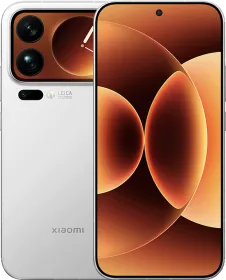

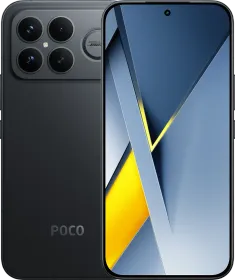
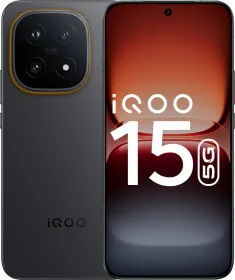
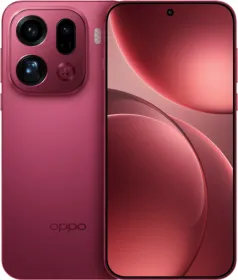
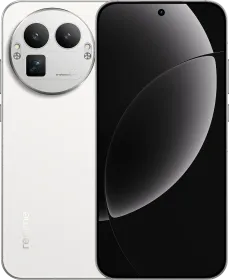

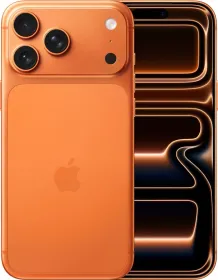












When this phone will launch?